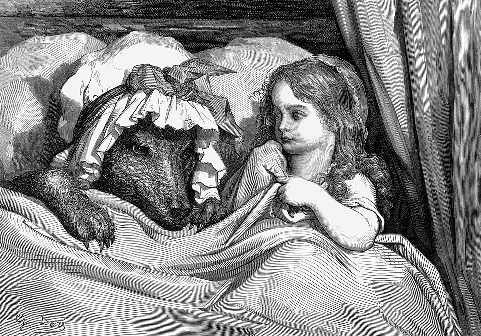Little Red Riding Hood: A History
August 13 2021
Revised, reworked, or simply reprinted, folktales are a huge part of our lives. It’s practucally a rite of passage of childhood to learn to memorize the core folktales from one’s culture. In modern times we often tend to think of folktales as relatively static, with one or two versions being the “official” version and any deviation being a reimagined unofficial incarnation.
In truth, since they stem almost entirely from oral tradition, change is at the core of what it is to be a folktale. The beloved versions we were taught at the laps of our elders are themselves reimagined versions of even older stories. Adapting to fit the culture, beliefs, and needs of the time is how such tales survive for centuries (and in some cases millennia).
Little Red Riding Hood is an example of that.
While there are several older tales that feature some of the aspects of what we now know as Little Red Riding Hood, it is generally believed that the oldest recognizable versions of the tale hail from France sometime between the 10th and 11th centuries.
The tale regarded as the oldest recognizable version of Little Red Riding Hood is a French story simply titled The Grandmother.
The bulk of the story’s plot is more or less as we know it save for three key changes:
- The wolf tricks Red into consuming Granny’s teeth, flesh, and blood.
- Instead of merely trying to lure Red closer to eat her, the wolf tries to get her naked and in bed with him.
- Instead of needing to be rescued, Red realizes the danger she is in and tricks the wolf into letting her escape.
In the oldest surviving version, Red is clever, inventive, and doesn’t need a man to rescue her.
Skip forward to the late 1600s and the story has changed. Now there is no cannibalism, but the wolf does lure Red into bed, where she is consumed and no rescue comes. To make sure there is no doubt about the meaning of the story, Charles Perrault lays it out plainly:
“Moral: Children, especially attractive, well bred young ladies, should never talk to strangers, for if they should do so, they may well provide dinner for a wolf. I say "wolf," but there are various kinds of wolves. There are also those who are charming, quiet, polite, unassuming, complacent, and sweet, who pursue young women at home and in the streets. And unfortunately, it is these gentle wolves who are the most dangerous ones of all.”
By the early 1800s, the Huntsman finally makes his debut by way of the Grimm collection of folktales, rescuing both Red and Granny, who can now survive if there is a man nearby to save them.
And now?
It would seem we have come full circle, with popular modern reimaginings often featuring Red being independent and capable of rescuing herself.
On a final note, it’s also worth pointing out that there has been a recent trend of merging Red with the wolf, often by way of making her a werewolf (e.g. in Disney’s Once Upon a Time TV series). Which is both ironic and fitting, as in many variations of the oldest versions of Little Red Riding Hood the wolf is actually said to be a werewolf, likely due to the then-pop culture craze regarding werewolf hunts (think witch hunts but for werewolves; the methods and fervour were comparable).
By Alice Flecha (Volunteer Blogger)

